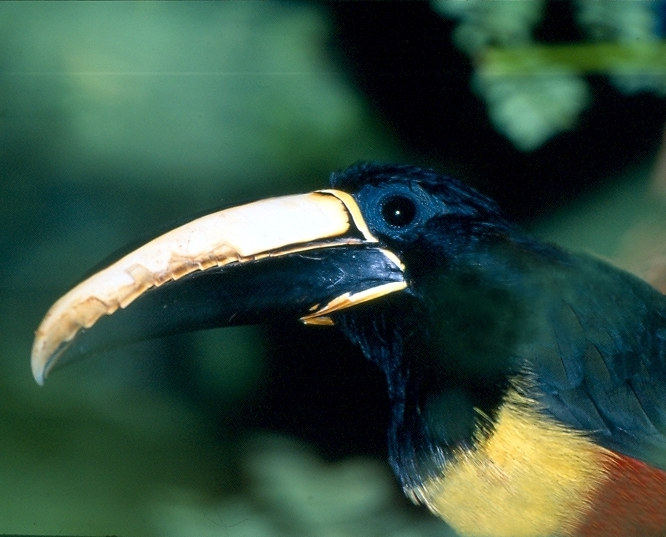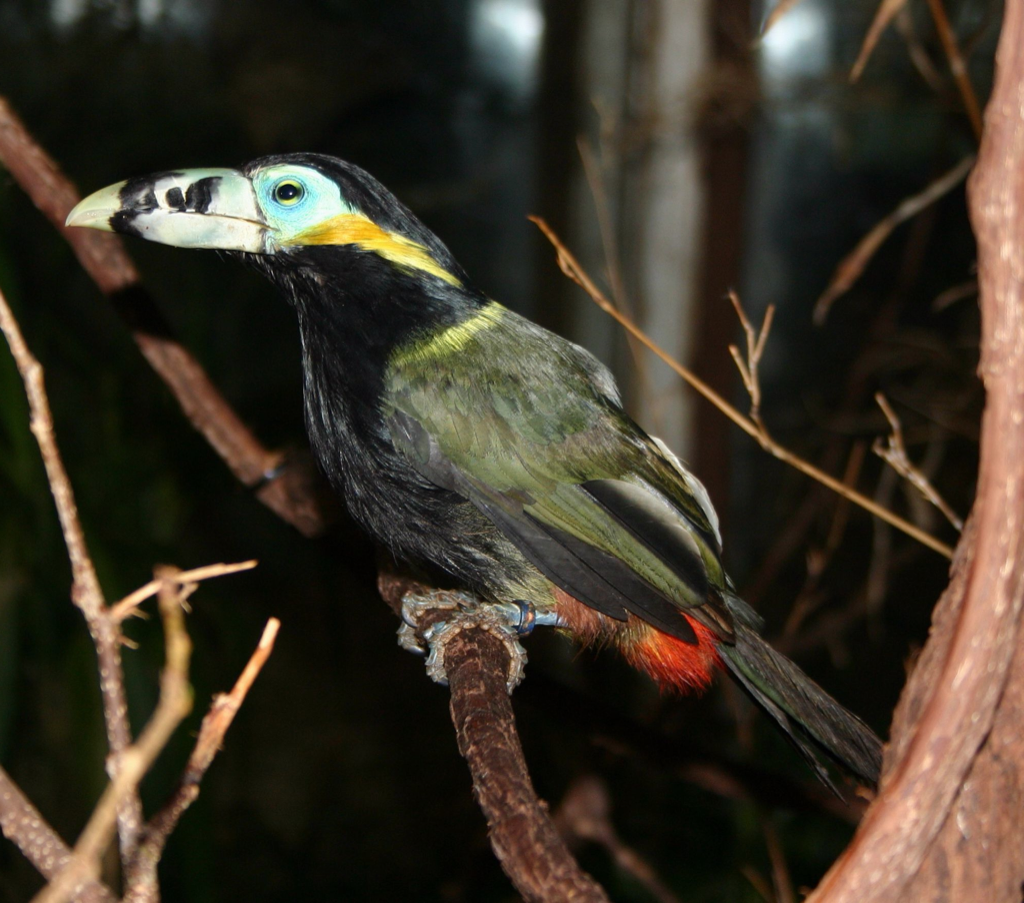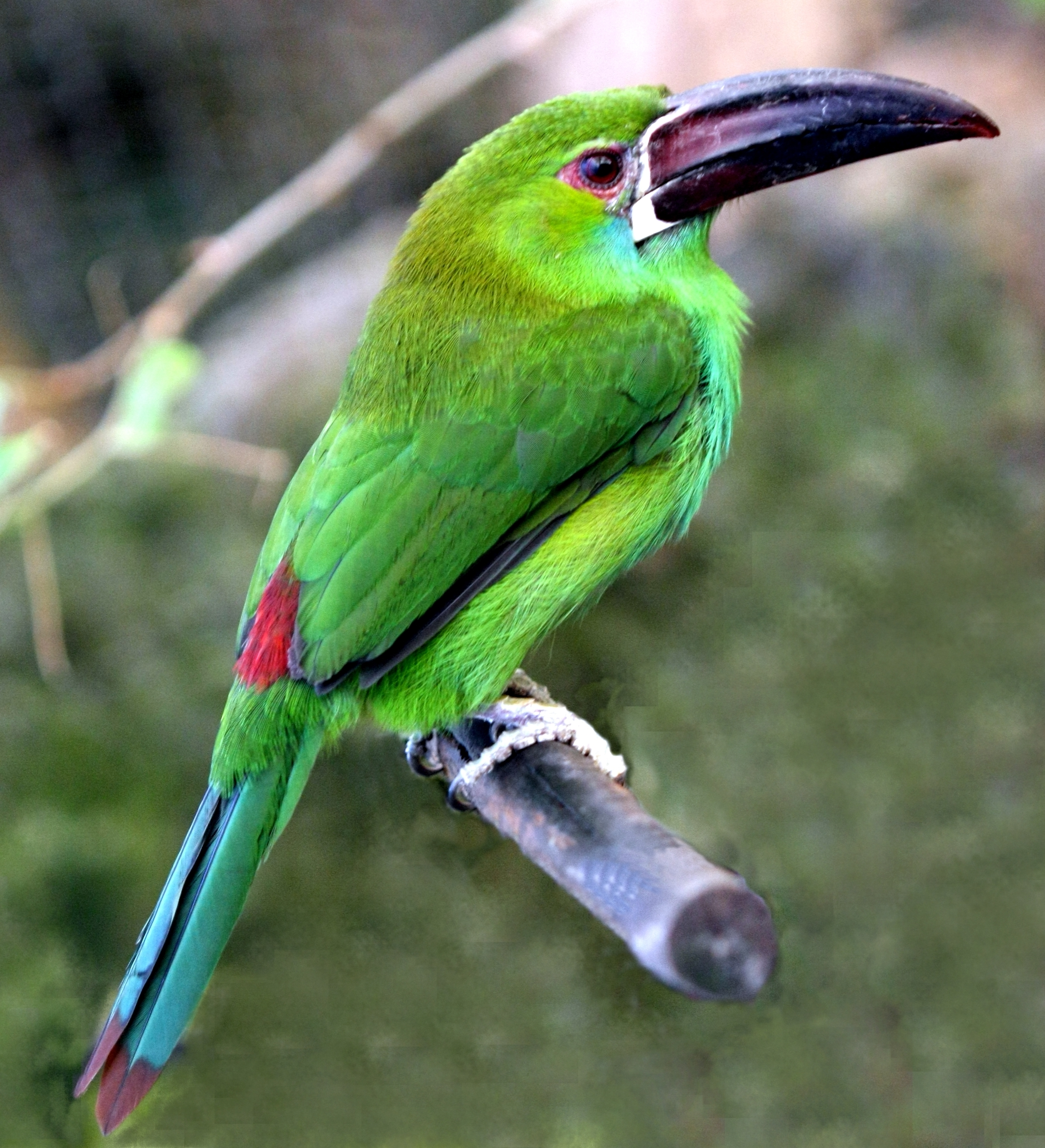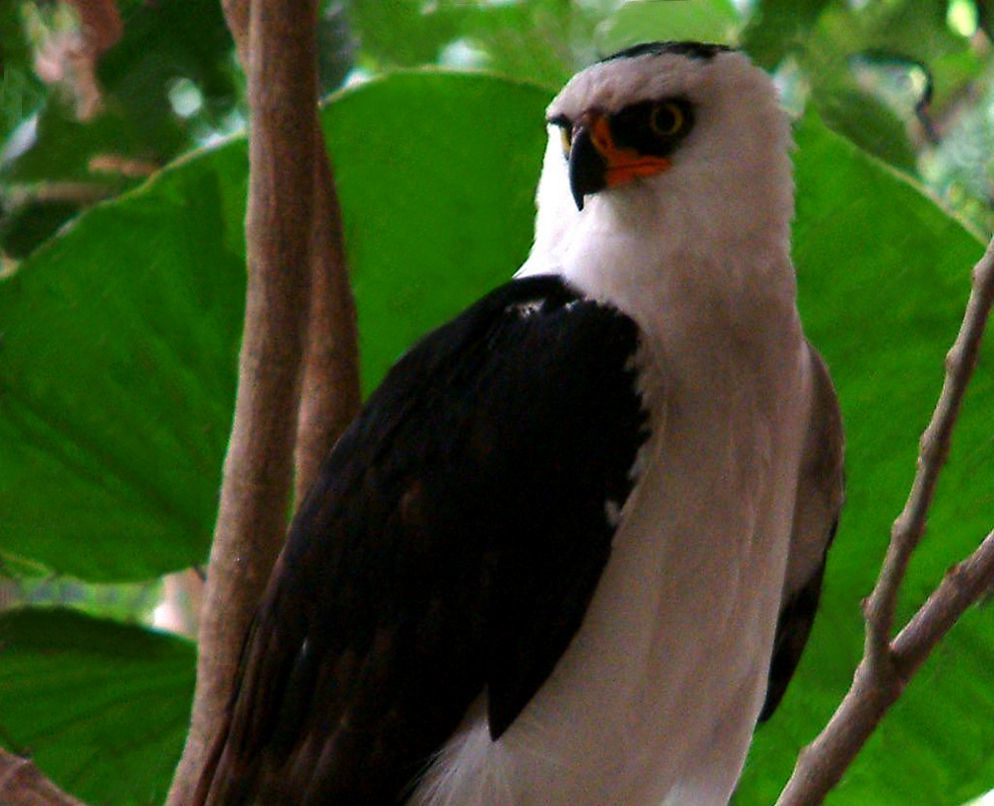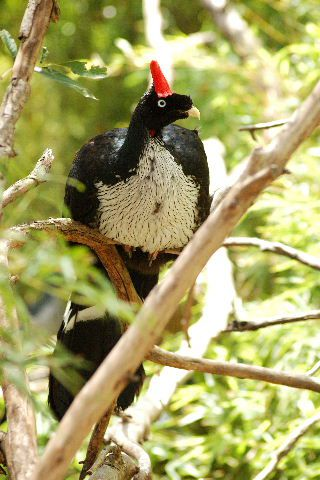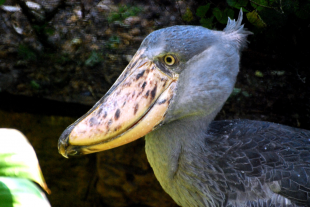
Being entirely gray the Shoebill is easily recognized, even without its most distinguishable feature which gives it its name – a bill that resembles a hook-tipped Dutch clog . The head is large in proportion to the body, and the many-colored bill is wide and thick, The hooked bill is 8 – 12 inches (20 – 25 cm) long, 4 – 5 inches (10 – 13 cm) wide and has cutting edges. It has yellow eyes and extremely long toes. Males and females have similar coloration with small crest or white tufts sticking out from the back of the head. The tail is rounded. The tan beak often has dark spots. The legs are skinny and long, like the legs of most wading birds; feet are unwebbed.


